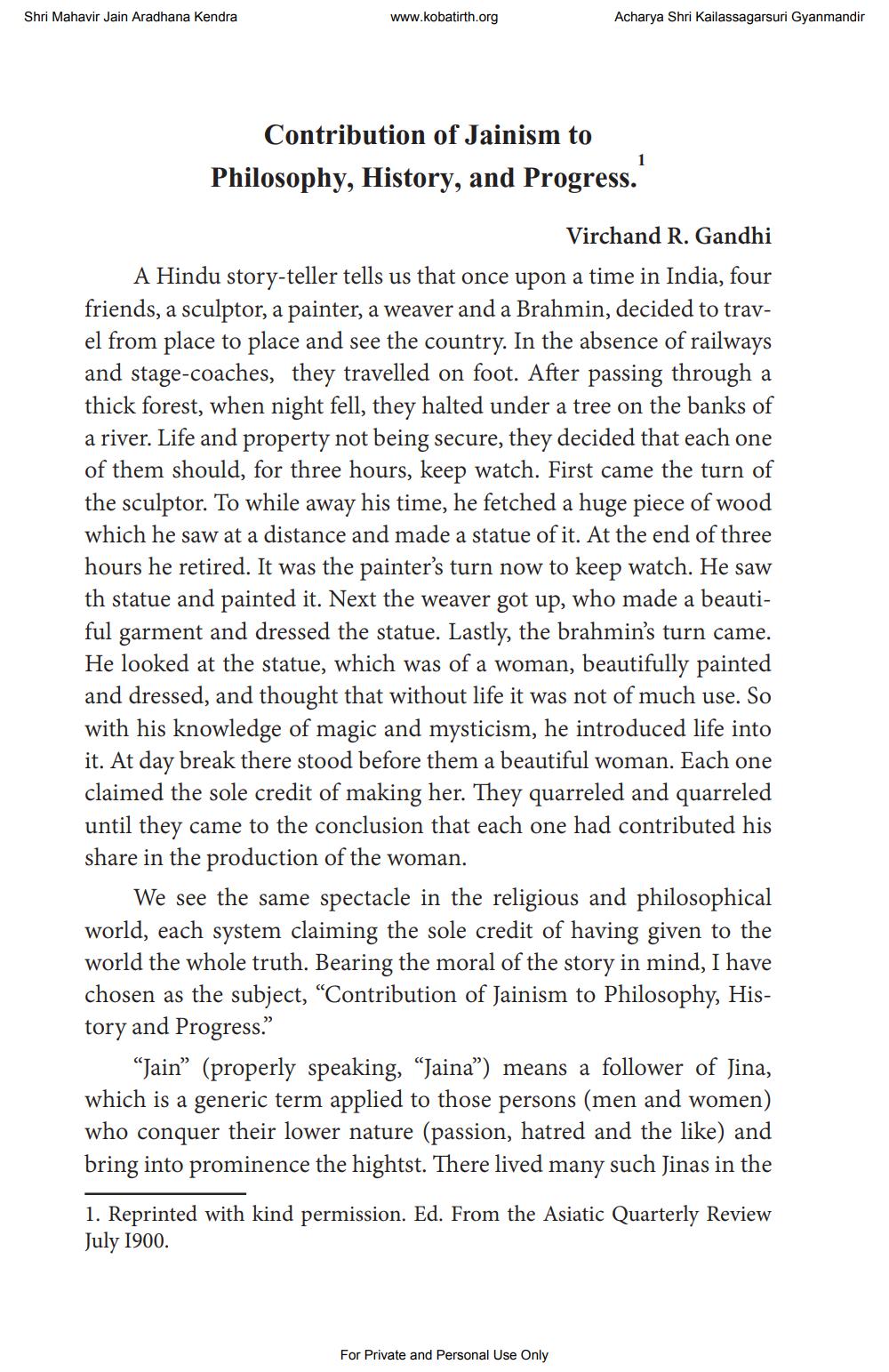________________
Shri Mahavir Jain Aradhana Kendra
www.kobatirth.org
Acharya Shri Kailassagarsuri Gyanmandir
Contribution of Jainism to Philosophy, History, and Progress.
1
Virchand R. Gandhi
A Hindu story-teller tells us that once upon a time in India, four friends, a sculptor, a painter, a weaver and a Brahmin, decided to travel from place to place and see the country. In the absence of railways and stage-coaches, they travelled on foot. After passing through a thick forest, when night fell, they halted under a tree on the banks of a river. Life and property not being secure, they decided that each one of them should, for three hours, keep watch. First came the turn of the sculptor. To while away his time, he fetched a huge piece of wood which he saw at a distance and made a statue of it. At the end of three hours he retired. It was the painter's turn now to keep watch. He saw th statue and painted it. Next the weaver got up, who made a beautiful garment and dressed the statue. Lastly, the brahmin's turn came. He looked at the statue, which was of a woman, beautifully painted and dressed, and thought that without life it was not of much use. So with his knowledge of magic and mysticism, he introduced life into it. At day break there stood before them a beautiful woman. Each one claimed the sole credit of making her. They quarreled and quarreled until they came to the conclusion that each one had contributed his share in the production of the woman.
We see the same spectacle in the religious and philosophical world, each system claiming the sole credit of having given to the world the whole truth. Bearing the moral of the story in mind, I have chosen as the subject, "Contribution of Jainism to Philosophy, History and Progress."
"Jain" (properly speaking, "Jaina") means a follower of Jina, which is a generic term applied to those persons (men and women) who conquer their lower nature (passion, hatred and the like) and bring into prominence the hightst. There lived many such Jinas in the
For Private and Personal Use Only
1. Reprinted with kind permission. Ed. From the Asiatic Quarterly Review July 1900.




